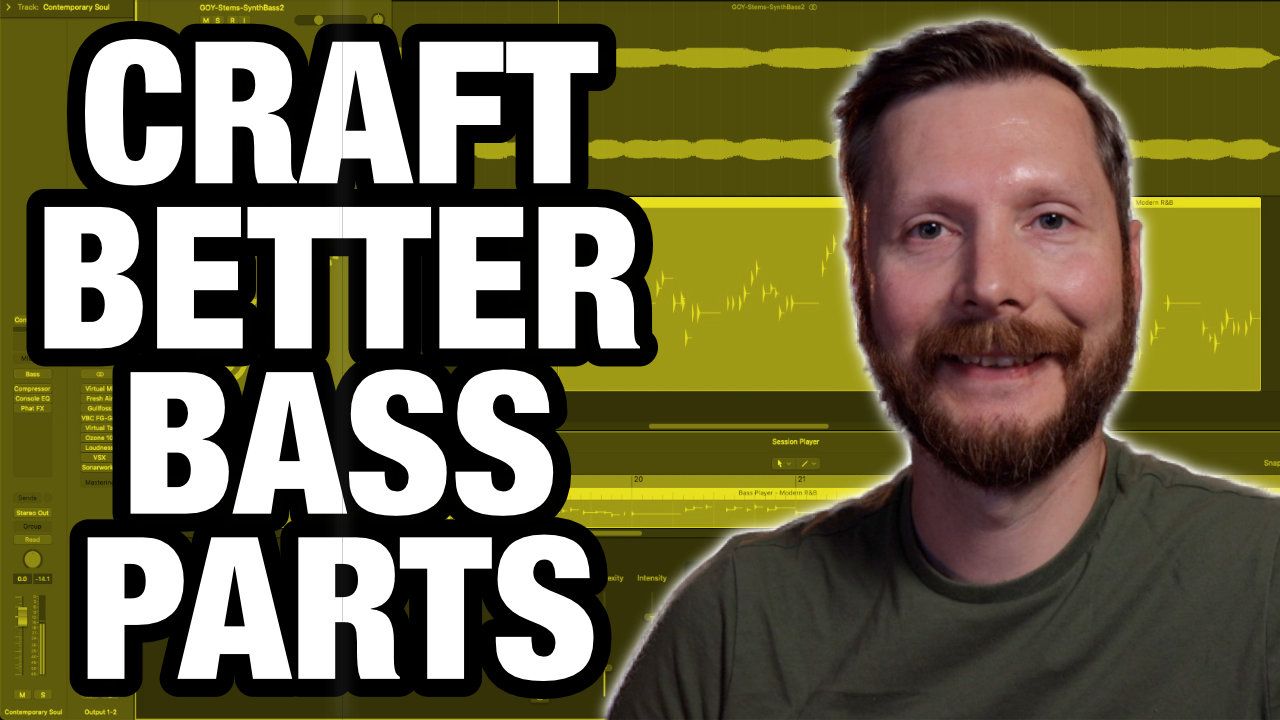Logic Pro 11 Bass Session Player (Complete Tutorial)
Jun 28, 2024
Today, we’re diving deep into the session bass player found in Logic Pro 11. I'll walk you through all the functions and features, and then show you how to customize your bass part to fit perfectly into your own track. Let’s dive in!
Getting Started with the Session Bass Player
First, let's add a bass player to our session. Click the plus button and select "Bass Player" from the session player options. You can choose from various bass player styles like pop rock, retro rock, pop songwriter, and more.
Understanding Chord Tracks
Before diving into the session bass player, let’s quickly touch on chord tracks. If you go to your global tracks and enable the chord track, this is where you’ll add your chords that correspond to the other instruments in your project. These chords will guide the session bass player.
Exploring the Session Bass Player
-
Styles and Presets: Change the bass player style anytime. We started with modern Motown but switched to modern R&B for this track. You can also choose from various presets like "Soul Flow" to get different starting points.
-
Complexity and Intensity:
- Complexity controls the busyness of the bassline. Lower complexity gives you longer, fewer notes, while higher complexity adds more, shorter notes.
- Intensity adjusts the dynamics—how hard the bass notes are played. Lower intensity results in softer notes, and higher intensity results in louder, more pronounced notes.
-
Pattern Options: Choose from different patterns to control the rhythm of the bassline. You can also make the bass follow the rhythm of another track, like drums, for a more cohesive feel.
-
Melody and Octaves:
- Melody controls how many different pitches are used. You can select options from "Root Only" to "Most Notes."
- Octaves let you add higher or lower registers of the root note.
-
Phrasing and Fill:
- Phrasing adjusts the note length from short to long.
- Fill Amount and Complexity control how often and how complex the fills are.
-
Swing and Details:
- Adjust the swing to change the feel of the eighth or sixteenth notes.
- Details tab offers options like dead notes, slides, pickup notes, mute offset, laidback feel, dynamics, humanize, and tempo settings.
Customizing Your Bassline
To further customize your bassline, convert the region to MIDI. This allows you to fine-tune individual notes. Right-click on the region, select "Convert to MIDI," and make any necessary adjustments.
Tweaking the Bass Instrument
When you load the bass player, it uses the Studio Bass instrument by default. You can tweak the sound or even replace it with a third-party bass plugin like Kontakt’s Rickenbacker bass for a different tone.
Final Adjustments
Listen to your track and make any final tweaks. Adjusting the complexity, intensity, and other parameters will help you achieve the perfect bassline for your song.
TIMECODES:
00:00 Intro
00:34 Loading a Bass Session Player
01:39 Chord Track
02:27 First Listen
03:12 Changing Bass Styles
03:49 Presets
04:31 Complexity & Intensity
05:39 Patterns
06:09 Follow Rhythm of Chords & Track
07:22 Melody
08:41 Octaves
09:15 Phrasing
09:51 Lowest Note
10:04 Fill Amount & Complexity
10:30 Swing
11:49 Details
13:57 Double Stops
14:33 Laid Back & Feel
15:30 Dynamics
15:59 Humanize
16:30 Tempo
16:44 Manual Rhythm Pattern
18:04 MIDI Editing
19:37 Changing the Bass Sound
20:30 Final Thoughts


